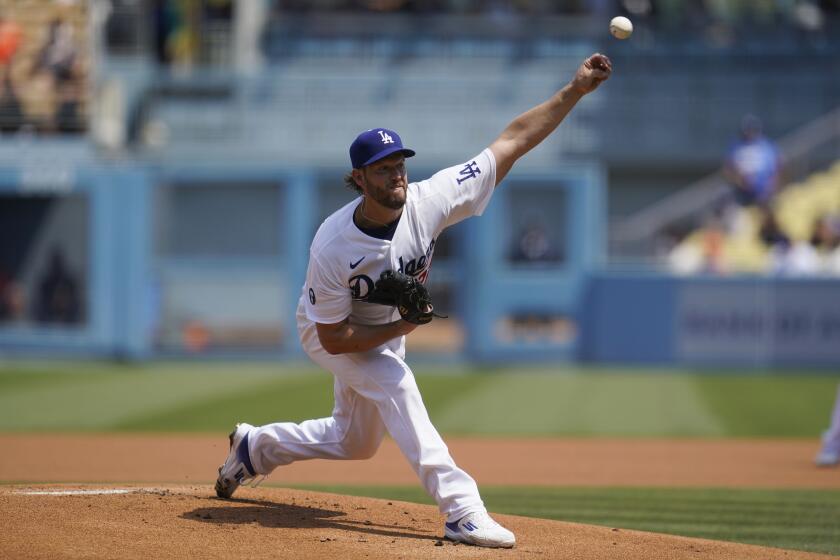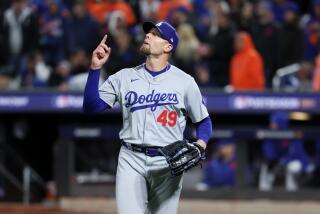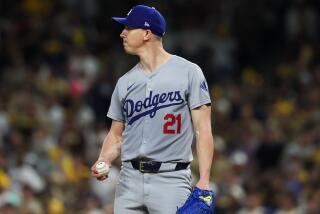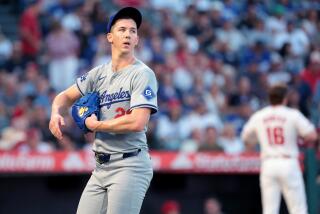Dodgers relievers playing games in the bullpen, saving games on the mound
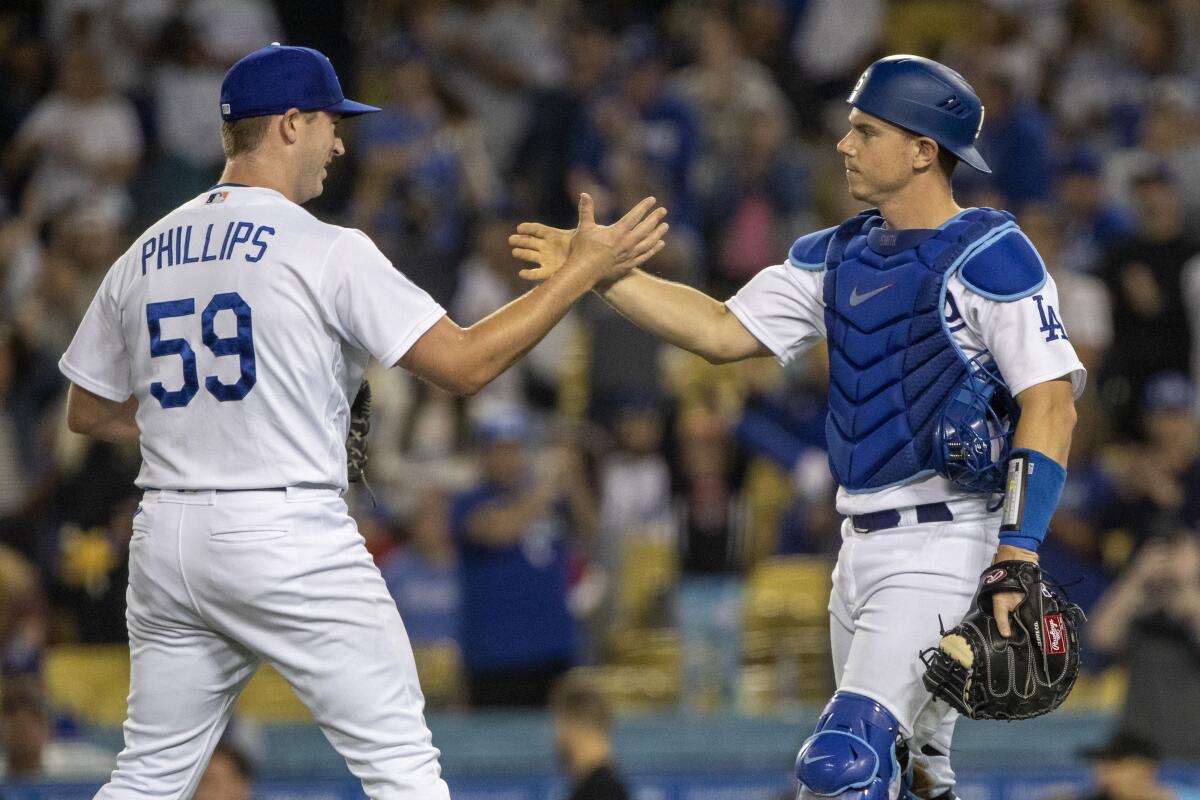
The rules of the game are simple.
Every day, as they sit out in the bullpen, Dodgers relievers get the chance to predict one home run by their teammates at any point of a game. If they feel a long ball coming, they signal it with their hat. And on the rare occasions they call it right, it sets off a mini in-game celebration in what has become a friendly, but fierce, competition.
There is strategy involved. Evan Phillips tries to identify favorable matchups pregame. Alex Vesia will scout each hitter’s first at-bat. There are times calls are simply placed on the hottest hand (Edwin Ríos was a popular choice early this season), or pick that day’s most sentimental at-bat (Vesia won on James Outman’s homer in his first career at-bat).
The Dodgers have been tracking each pitcher’s season-long performance, too, keeping the standings updated on a hand-drawn scoreboard.
“We got a good little race going,” said Vesia, who trails only Phillips and bullpen coach Josh Bard in the standings.
“I have a pretty large [lead] right now,” Phillips added with a smirk. “Those guys have some work to do.”
The game has helped bond a group that has been battered by injuries to some of its most important arms.
Top set-up man Blake Treinen only recently returned from a shoulder injury that cost him most of the season. Key offseason addition Daniel Hudson won’t pitch again this season because of a torn knee ligament suffered in June.
Dodgers manager Dave Roberts has plenty of options for the postseason rotation, even if they’re not all obvious. If it doesn’t work, he will be the one in line for criticism.
Several other injured veterans remain on the mend, including Tommy Kahnle, Danny Duffy and David Price.
Even eight-time All-Star closer Craig Kimbrel hasn’t been reliable, though his issue has been inconsistent performance rather than time missed on the injured list.
Instead, it’s been the solidification of such projects as Phillips and Vesia; the growth of younger relievers such as Brusdar Graterol and Caleb Ferguson; the quiet additions of Yency Almonte and Chris Martin; and the year-long effort to make all the shifting pieces fit, that have helped the Dodgers build a bullpen that ranks third in the majors in ERA.
“It looks a lot different than what we’ve anticipated,” manager Dave Roberts acknowledged this week. “But those guys are accountable as anybody we have. They don’t care about roles. … That speaks to the mindset, the culture of those guys down in the bullpen.”
When Treinen rejoined the Dodgers this week after missing four months, he joked with assistant pitching coach Connor McGuiness upon seeing some of the new faces in the bullpen.
“He’s like, ‘Are you guys gonna be carbon-copying me?’ ” McGuiness recalled with a laugh.
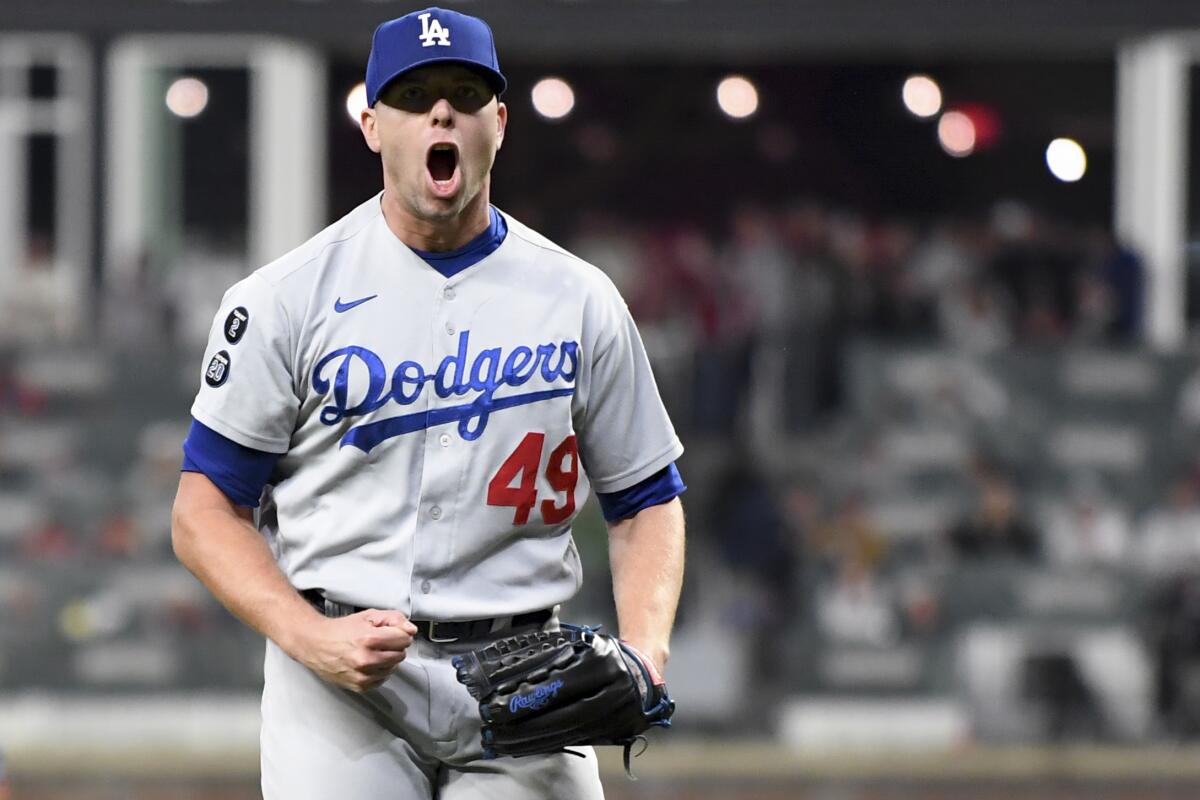
No, McGuiness told Treinen, not exactly.
Treinen has become the prime example of the Dodgers’ proficiency at revitalizing the careers of struggling pitchers.
A one-time All-Star who had lost his way with the Oakland Athletics, the right-hander came to Los Angeles in 2020 looking for a fresh start. After a solid but not spectacular first season with the Dodgers, he found a new sweeping slider, a re-emphasis on his cutter and more velocity behind his sinker, helping him emerge last season as one of baseball’s best relief pitchers again.
From the outside, it seemed like an easy template to replicate — a specific mold for the Dodgers to plaster with other pitchers, especially in Treinen’s absence this season.
Sitting in the team’s home dugout recently, McGuiness shook his head at the misconception.
“[Each pitcher] still goes about it very differently,” he said. “Each brings their own spin to a similar recipe.”
Take Phillips, the non-descript soon-to-be 28-year-old right-hander who has shouldered the biggest workload in the absence of Treinen, Hudson and others.
When the team claimed him in August 2021, he was a journeyman reliever, a 17th-round draft pick with a 7.50 career ERA with three teams.
The Dodgers, however, saw potential.
He already had a hard-breaking slider and decent fastball velocity. The team helped him add a cutter and more sinking action to his heater.
His new arsenal more closely resembles Treinen’s. But the characteristics of each pitch, the arm angle from which he throws, and the way he utilizes his weapons to attack hitters is different.
“I don’t think they necessarily said, ‘Hey, we’re gonna try to morph you into Blake Trienen,’ ” Phillips said. “I just think what this team does really well, especially for relievers, is getting you to throw your best pitches more.”
The result: Phillips has a 1.35 ERA, a 0.769 WHIP (walks and hits per inning) and perhaps the most trust of any pitcher in the bullpen, on track to pitch in some of the highest-leverage moments of October.
“Going into the season, we had other guys that we looked at as leverage guys,” Roberts said. “So to his credit, as guys have kind of fallen off or gotten hurt, he’s taken the opportunities and run with them.”
Others have done the same.
Vesia has become the go-to left-handed reliever thanks to improvements with his fastball — a pitch that had never topped 94 mph in a major league game before he was acquired in a trade last year, but now averages that velocity after the team helped him make changes to his mechanics and training routines.
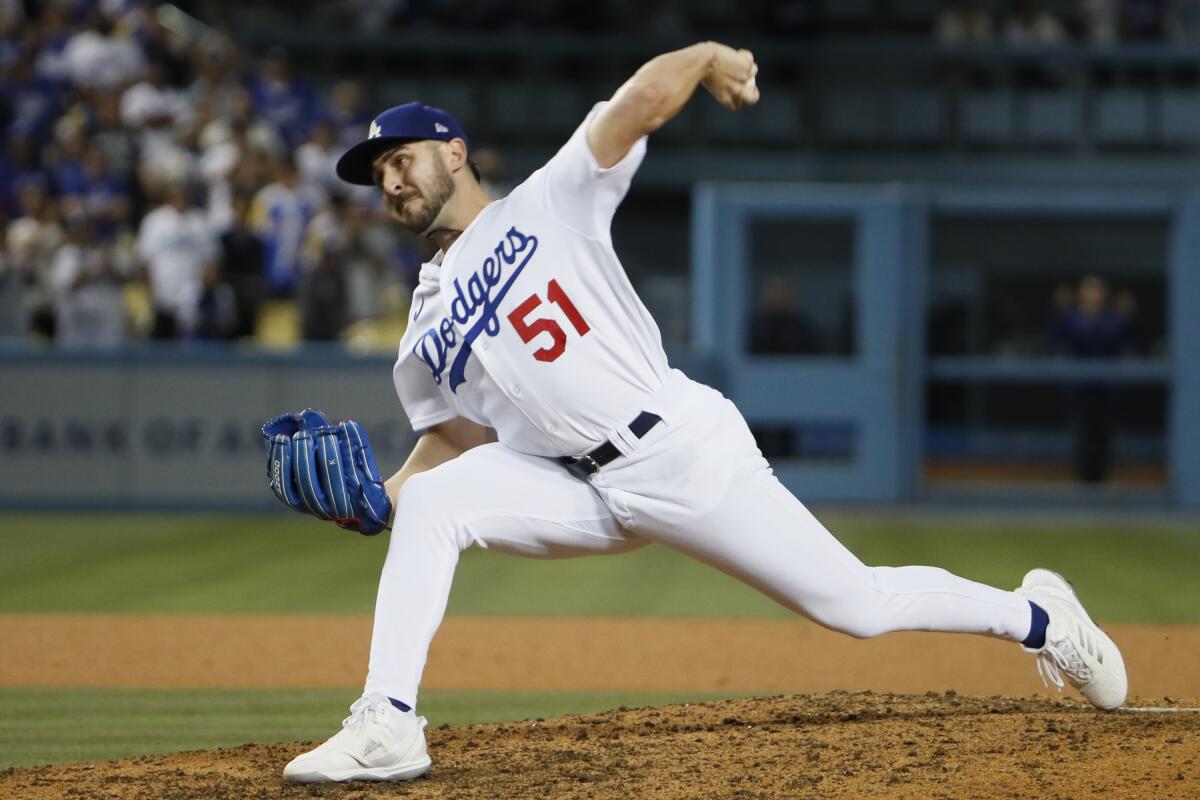
“I’m a completely different pitcher when I’m 90-93 mph versus when I’m 93-95 mph, or even 97 mph,” said Vesia, who has a 2.36 ERA and the most strikeouts among the team’s relievers.
Almonte was a late spring addition this season, signing a minor league deal after four up-and-down seasons with the Colorado Rockies.
On one of his first days with the Dodgers, he sat down with McGuiness and head pitching coach Mark Prior to discuss tweaks to his pitch mix: More sliders and sinkers, fewer four-seamers and changeups.
He has since posted a 1.15 ERA, stunning his old teammates when the Dodgers visited Colorado earlier this year.
“They were like, ‘Bro, what did they do?’ ” Almonte laughed. “I just told them, the Dodgers know what they’re doing.”
There are homegrown examples too.
Graterol — who, like Almonte, is on the injured list but expected to return in the coming weeks — overcame some early struggles by zeroing in his command and making the cutter a bigger part of his mix, resulting in a 0.89 ERA since June 8.
Ferguson, who returned from his second Tommy John surgery in May, has credited part of his success to a more relaxed mental approach, helping him post a 1.73 ERA in his comeback campaign.
Add in help from other surprise contributors such as Price (2.58 ERA in his first full season as a reliever) and Martin (the deadline acquisition who has a 2.51 ERA in 15 appearances with the Dodgers) and the club has been able to turn a pile of seemingly spare and overlooked parts into one of the most well-oiled middle relief machines in the majors.
Come October, the Dodgers will still have to figure things out on the back end.
Max Muncy homers twice and Craig Kimbrel pitches a 1-2-3 ninth innings as Dodgers defeat Giants, 6-3
Their closer situation remains up in the air, with Kimbrel pitching better of late — seven consecutive scoreless outings — but still owning sub-par numbers on the whole this season.
There’s a chance several other arms could be added to the equation down the stretch, with Duffy, Kahnle and Victor González all pegged for potential returns from long-term injuries.
But in a season where the bullpen could have crumbled, the emergence of a new core of relievers has kept them steady throughout the year.
In addition to their third-ranked ERA, they have the lowest bullpen WHIP, second-lowest batting average against and best strikeout to walk rate in the majors.
And when the playoffs start next month, they’re hopeful their bountiful late-game options will prove to be one of their biggest strengths — and that they’ll have a lot more than just correctly predicted home run calls to celebrate.
“Some people said, ‘How are you gonna make those pieces work?’ but I feel like we’ve done it,” Phillips said. “You can’t predict injury. You can’t predict success or not. But just having that depth, being able to go out and get pieces when we need to, plus we have some great leadership down there … I think it makes a big difference.”
More to Read
Are you a true-blue fan?
Get our Dodgers Dugout newsletter for insights, news and much more.
You may occasionally receive promotional content from the Los Angeles Times.

